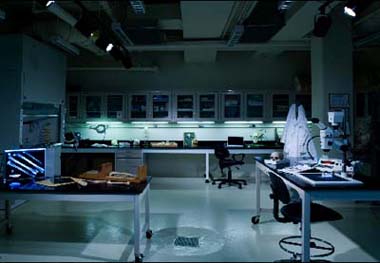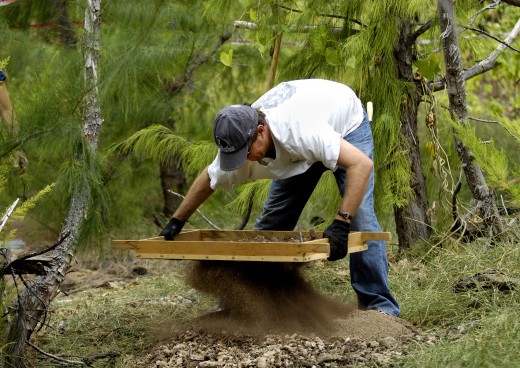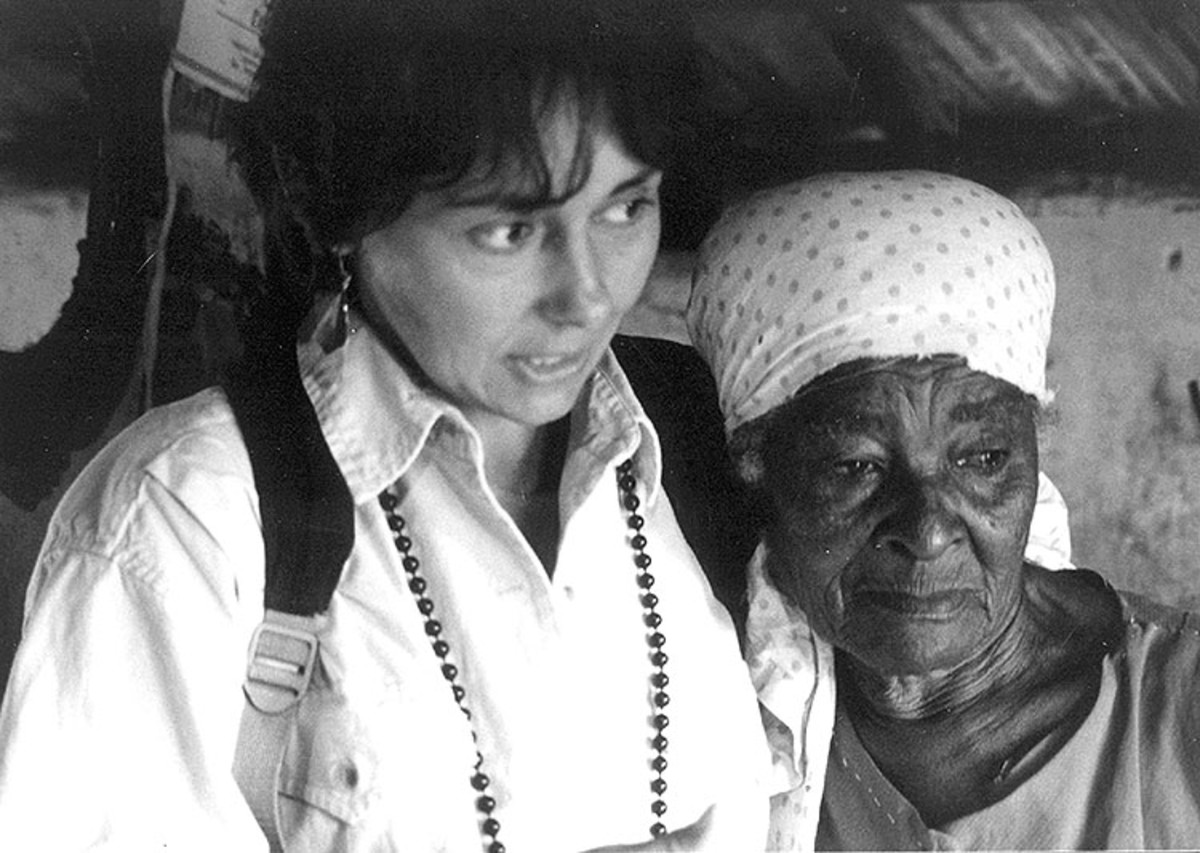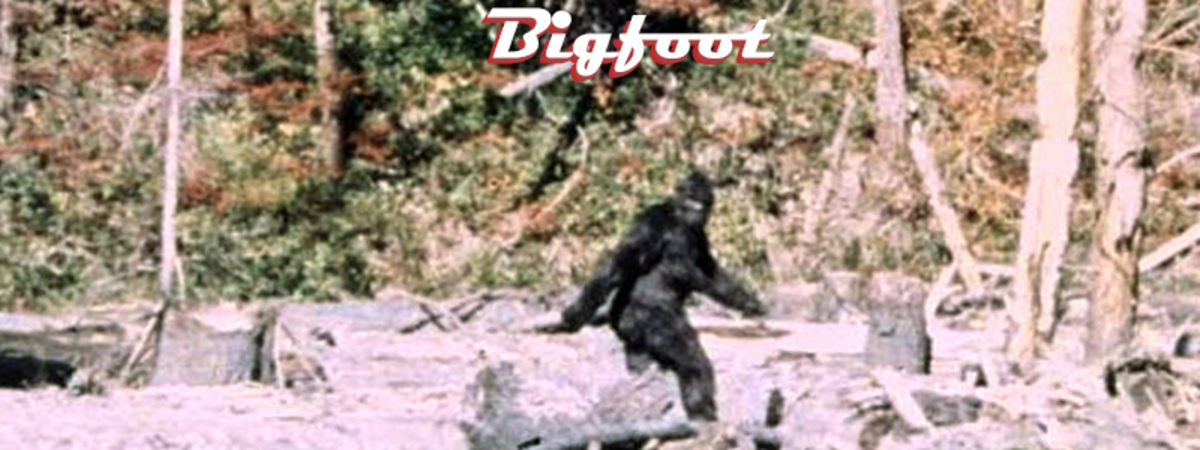What is Forensic Anthropology?
Kari Bruwelheide, a forensic anthropologist, treats all remains in her lab as individuals, each having a unique story which unfolds in his or her skeleton. Bruwelheide feels a desire to learn more about each person and it is that desire that encourages the development of new technologies and methods which allow more information to be deciphered. This detective work is most stimulating because it allows a little bit more of the human story to be revealed.1
Forensic anthropology applies the sciences of physical anthropology and human osteology in a legal setting. Human skeletal remains are examined for law enforcement agencies to determine the identity of unidentified bones and the exact nature of the trauma inflicted upon the victim if that determination cannot be made by the pathologist. In order to completely understand the role of forensic anthropologists, it is necessary to look at the root disciplines.
- Anthropology alone is the study of man and encompasses several sub-disciplines including cultural anthropology, linguistic anthropology (study of human languages), archaeology and physical anthropology.
- Physical anthropologists study human remains including bones and teeth and must be experts in human osteology (study of the human skeleton).
Resources Important to the Forensic Anthropologist
Physical Anthropology is a division of the American Academy of Forensic Sciences. In the United States, the Hamann-Todd Collection of the Cleveland Museum of Natural History and the Terry Collection in the Smithsonian Institution are two important research collections of human skeletal remains. A more modern collection is the William M. Bass Donated Skeletal Collection at the University of Tennessee at Knoxville. Most of these remains spent time at the Anthropological Research Facility or Body Farm as it is popularly known in the media. These collections are invaluable for aiding the determination of questions often asked of forensic anthropologists:
- Are the remains human or animal?
- Was the individual male or female?
- How old was the individual upon death?
- How tall was the individual?
- Was the individual in generally good or poor health?
- To what ethnic origin did the individual belong?
- How long since the individual died?
The identification of these remains is important for both humanitarian reasons and to assist the legal process in the detection of crime.
What Forensic Anthropologists Do NOT Do!
Unlike their portrayal on television and film, forensic anthropologists do not perform the following:
- Collect trace evidence.
- Run DNA tests.
- Analyse ballistics or weapon evidence.
- Analyse blood spatter.
- Conduct autopsies.
Focus of Forensic Anthropologists
Forensic anthropologists deal strictly with human remains. They specialize in techniques dealing only with the collection and analysis of skeletal evidence. Their assistance is required most often when the victim’s remains are:
- In an advanced state of decomposition;
- Are burned beyond recognition;
- Are mutilated beyond recognition;
- Are otherwise unrecognizable;
A forensic anthropologist will do the following to help crime scene officials:
- Attend a crime scene to collect human remains;
- Clean up bones for further analysis;
- Analyse human skeletal remains to establish the victim profile (age, race, height);
- Analyse trauma on the bones to establish the pathway of a bullet or knife or the number of stab wounds;
- Work with a forensic odontologist (dentist) to match dental records with a known individual;
- Testify in court about his/her analysis of the remains.
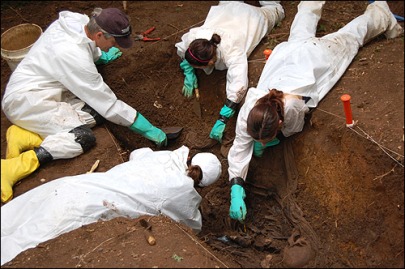
How to Become a Forensic Anthropologist?
The following steps are necessary in becoming a forensic anthropologist:
- Get a degree in physical anthropology at University focusing on human osteology.
- Acquire a Master's Degree in physical anthropology or preferably a PhD in physical anthropology.
- Acquire as much field experience and bone analysis experience as possible usually through your University programs working with a qualified physical or forensic anthropologist or through volunteer work with human rights organizations.


Employment Opportunities for Physical Anthropologists and Forensic Anthropologists
There are no full time forensic anthropologists in Canada. Most work as physical anthropologists in museums or universities and are consulted when skeletal remains are found and require the expertise of a skeletal biologist. Forensic anthropologists in Canada belong to the Canadian Association of Physical Anthropology and in many cases to the Canadian Society of Forensic Sciences.
The employment situation is similar for forensic anthropologists in the United States. There is also a professional organization to which physical anthropologists working in the forensic anthropology field can belong, the American Board of Forensic Anthropology.
View Exhibitions related to Forensic Anthropology at the Smithsonian!
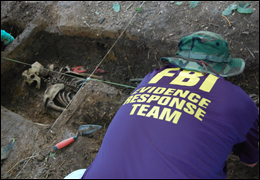
University of Tennessee's Anthropology Research Facility
Established a quarter of a century ago by Dr. Bill Bass, a prominent forensic anthropologist this research site relies on donated remains. Research into rates of decomposition, time since death and other factors involved in violent and non-violent death are established for a multitude of human body disposal situations. FBI and crime scene personnel have access to information, which has been painstakingly researched and recorded at the "Body Farm", that can be applied to their own crime scene . This Anthropology Research facility as well as others such as the Smithsonian National Museum of Natural History have helped advance the science of forensic anthropology and crime scene analysis of human remains. Every May, the "Body Farm" hosts a week long course for for 40 special agents and professionals who are Evidence Response Team members in field offices around the country. They are paired with a leading forensic anthropologist to learn how to best excavate and identify bodies and preserve important clues and data vital to criminal investigations.
University of Tennessee Department of Anthropology Home of the "Body Farm"
Works Cited
1. Bruwelheide, Kari . Smithsonian museum specialist and forensic anthropologist. Forensic Anthropology at the Smithsonian. Smithsonian: National Museum of Natural History.
Other Resources
Forensic Anthro.com. http://www.forensicanthro.com/
Department of Anthropology. University of Tennessee Knoxville. http://fac.utk.edu/
Forensic Anthroplogy. http://people.stu.ca/~mclaugh/specialties/forensic_anthropology.html
Read these Fiction Books by Prominent U of Tennessee Forensic Anthropologist Dr. Bill Bass
Interesting Resources for the Budding Forensic Anthropologist
- Written in Bone - A Modern Forensic File
Consider the clues — cuts, broken bones, charring. This modern forensic case spotlights just how much a skeleton can reveal. The remains can tell us not only about the deceased person in life, but also about events prior to and surrounding death and


